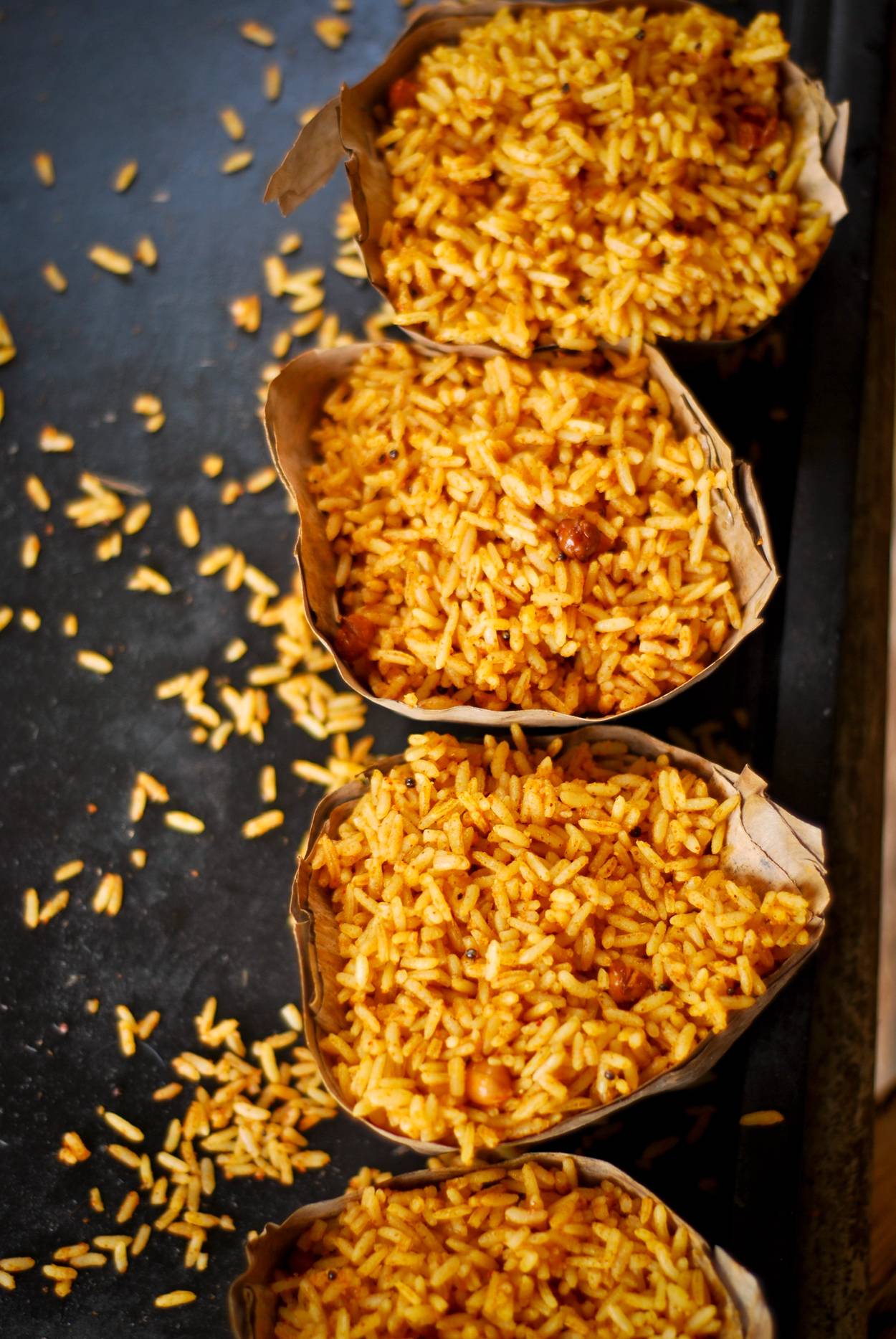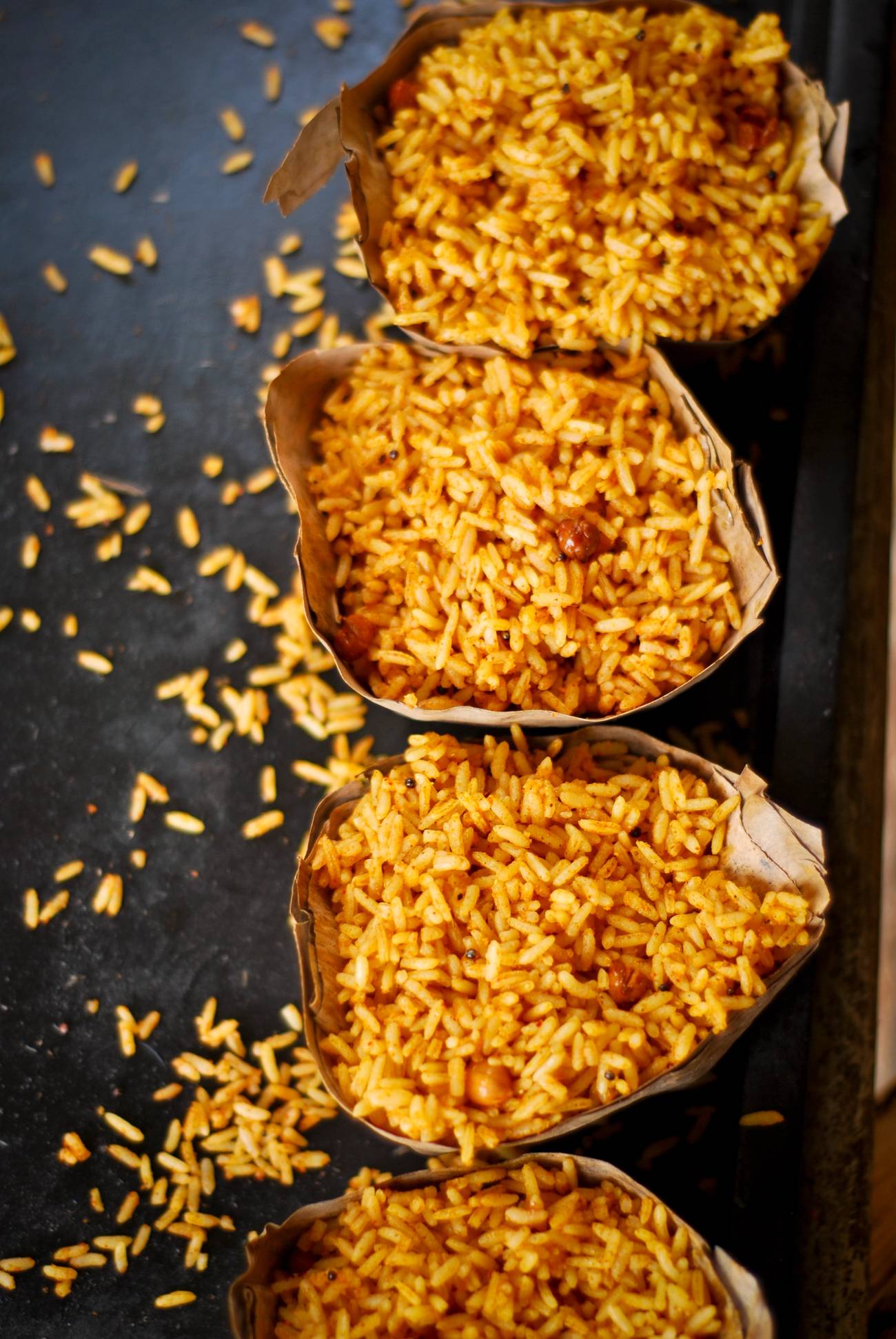The Joys of Tamarind
From India to Latin America and beyond, Jews have been cooking with the sweet-sour fruit for centuries




The food world is always on the lookout to rediscover exciting, “new” ingredients. But tamarind is one that can easily be overlooked; most people have no idea what it is or how to use it. It is widely used in Indian cooking especially in curries, pickles, chutneys, chaat (snacks), tea, and sherbets. In Mexico it is often used to make agua de tamarindo—a refreshing drink made by diluting the boiled and strained pulp with sugar and water. It’s the secret ingredient in Worcestershire sauce. And it’s widely used to flavor all kinds of curries, legume dishes, relishes, marinades, candies, and drinks in Southeast Asia, India, the Caucasus, and Latin America. And in all those places—and beyond—Jews have been cooking it for centuries.
Tamarind is the bulbous, podlike fruit of the tamarind tree (Tamarindus indica), which is indigenous to East Africa but has been cultivated in India since ancient times. Today it is cultivated all over the tropical and subtropical world. The tamarind pod contains a tangy, sweet-sour pulp and six to 12 seeds. As it matures, the soft, green pod darkens and forms a brittle shell, while the flesh becomes sweeter, less acidic, and reddish-brown in color. Its flavor is distinctive and very strong—so be warned, a little goes a long way. Its name derives from the Arabic tamr hindi—meaning “Indian date”—and tamarind does taste a little like dates (or dried apricots), but is much tangier.
Before the widespread use of the lemon, tamarind was often used as a souring agent. Its tangy flavor made it especially appealing to Jews, who have always loved sweet-sour food. In fact, Jewish merchants—called Rhadanites—are said to have brought the tamarind to the Near and Middle East in the seventh or eighth century via the Silk Road that connected India and Southeast Asia to Aleppo in Syria, where it was quickly adopted by the Jewish community. Tamarind is still an important element of Syrian Jewish cooking, appearing in numerous dishes from bazargan (a bulgur and tamarind salad), yebra (stuffed vine leaves, often served with an apricot and tamarind sauce), and to add depth to tomato sauce.
More than anywhere else, tamarind is loved in India—and in particular by Indian Jews, especially the Baghdadi Jews and the Jews of Cochin, in what is now present-day Kerala in the southern part of the country.
The Baghdadi Jews, who were primarily merchants drawn to the rapidly expanding trading centers of the British East India Company, came from the Middle East and settled in the 18th century in the cities that were then known as Bombay and Calcutta (today, Mumbai and Kolkata), bringing their culture and their cuisine with them. Exotic new flavorings such as fresh ginger, turmeric, mustard seeds, ground coriander, cardamom, fenugreek, chilies, and curry leaves were added to traditional Syrian dishes and a new hybrid cuisine was born. Some of their favorite dishes included bamia khutta (okra in a spicy tamarind sauce), which is often served with koobe (stuffed dumplings that are related to Iraqi kubbeh); brinjal maharsha (stuffed aubergines); and mahmoora (chicken in a spicy tamarind sauce with raisins and almonds). They also adopted many of the local dishes—namely curries, pickles, and a variety of chutneys that also contain tamarind—which they liked to eat with street food, especially samosas. And they liked to cool down with a glass of tamarind sherbet.
The Jews of Cochin, who many people say have lived on the Malabar coast since the days of King Solomon, were so fond of the tamarind that in the past almost every family had a tamarind tree in their garden. Tamarind still appears in many traditional Cochin recipes, especially sambhar (a spicy lentil, vegetable, and coconut stew), rasam (a peppery broth with onion, garlic, chilies, and spices), puli inji (tamarind and ginger pickle), and all kinds of chutneys, including pulinkari—a rich chutney made with dates, tamarind, garlic, fresh ginger, chili, mustard seeds, and jaggery or muscovado sugar.
Tamarind adds a wonderful depth of flavor that is also much appreciated by Georgian Jews, who use it in vegetable dishes especially dolma (stuffed vegetables), and chicken braised in a pomegranate and tamarind sauce—which is often served for Rosh Hashanah. As Darra Goldstein writes in her classic book The Georgian Feast: “Some sauces are so delicious in themselves that a common expression goes, ‘With a Georgian sauce you can swallow nails.’” In other words, they are so strong and tasty they need only to be mopped up with some bread.
Tamarind also has other uses. In folk medicine, tamarind leaves were used to reduce inflammatory swellings and ringworm. The tartaric acid in tamarind also makes it suitable to clean metals—especially copper and brass—but don’t worry, tamarind is not harmful to your health. On the contrary, the pulp is traditionally used in Ayurvedic medicine as a tonic for the heart, as a digestive, a mild laxative and to treat anorexia. Tamarind water can also be used as a gargle for sore throats. It is also said to be an aphrodisiac—especially for women.
So how can you use tamarind? The ripe fruit can often be found in the pod at a Southeast Asian, Latin American, or Indian store. Unripe tamarind is bright green and extremely sour, so should be avoided; the ripe fruit should be brown in color. Simply peel away the outer brown shell and eat the sticky, sweet-sour pulp inside, discarding any fibers or seeds.
Alternatively, you can buy a compressed block of tamarind, which is generally used for cooking. It is also available frozen. It usually contains some fiber and seeds, so it’s best to soften it, then force it through a fine strainer before using. To rehydrate, simply break off a small piece of pulp and mix with hot water. The proportions are roughly one cup of hot water to two ounces of pulp.
Tamarind concentrate or paste usually comes in a jar and can be used directly from the container. A little sugar is usually added to the recipe you are using, to offset its acidity and to balance the sweet-sour flavor of the dish. The strength and denseness of the paste can vary from brand to brand, so you may have to adjust the amount used to suit your palate. Once opened, if properly sealed, it will keep for months in the refrigerator.
Paola Gavin is a food writer and author of four vegetarian cookbooks including Hazana: Jewish Vegetarian Cooking. Follow her on Instagram @paolagavin and on Twitter @paolagavinfood.